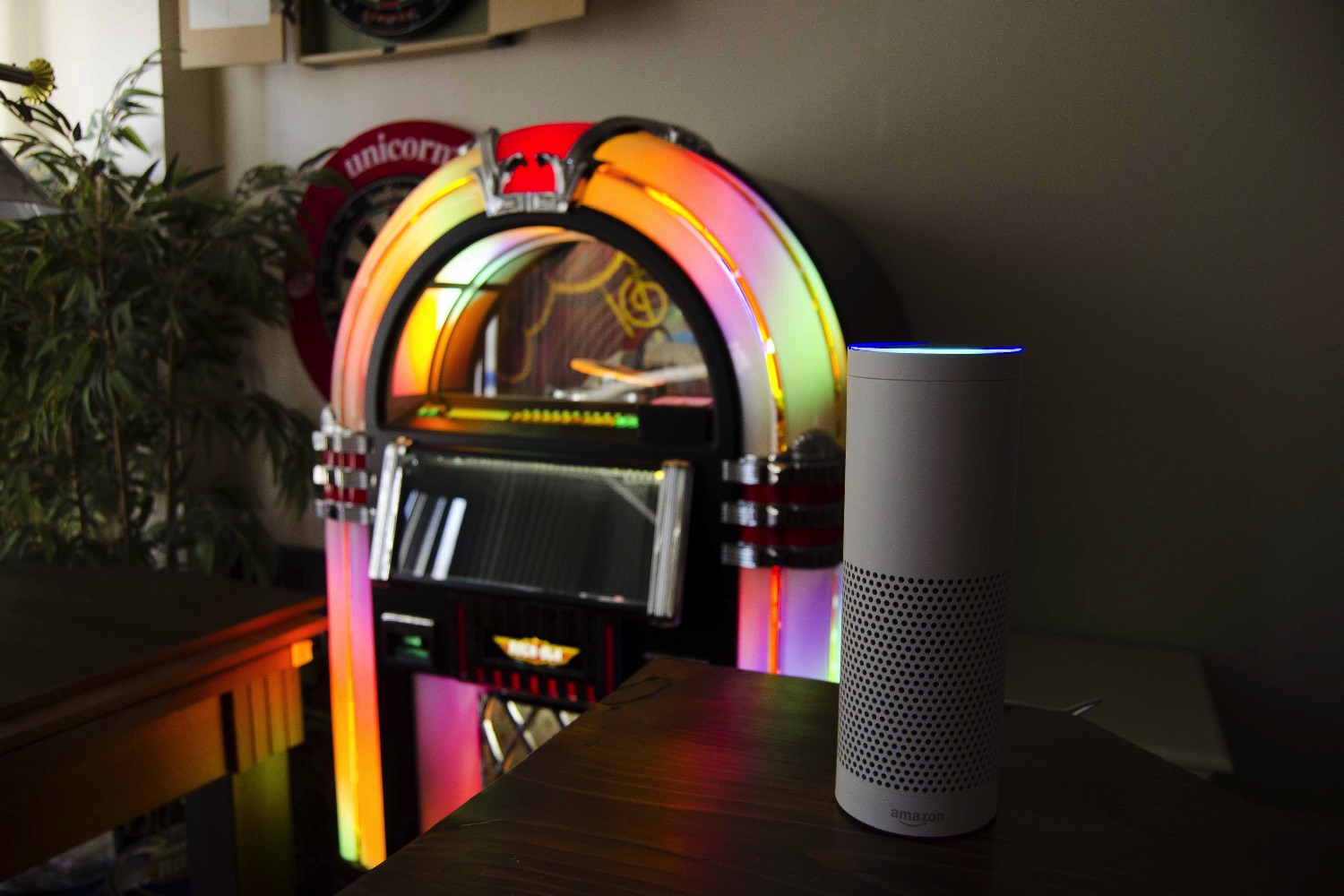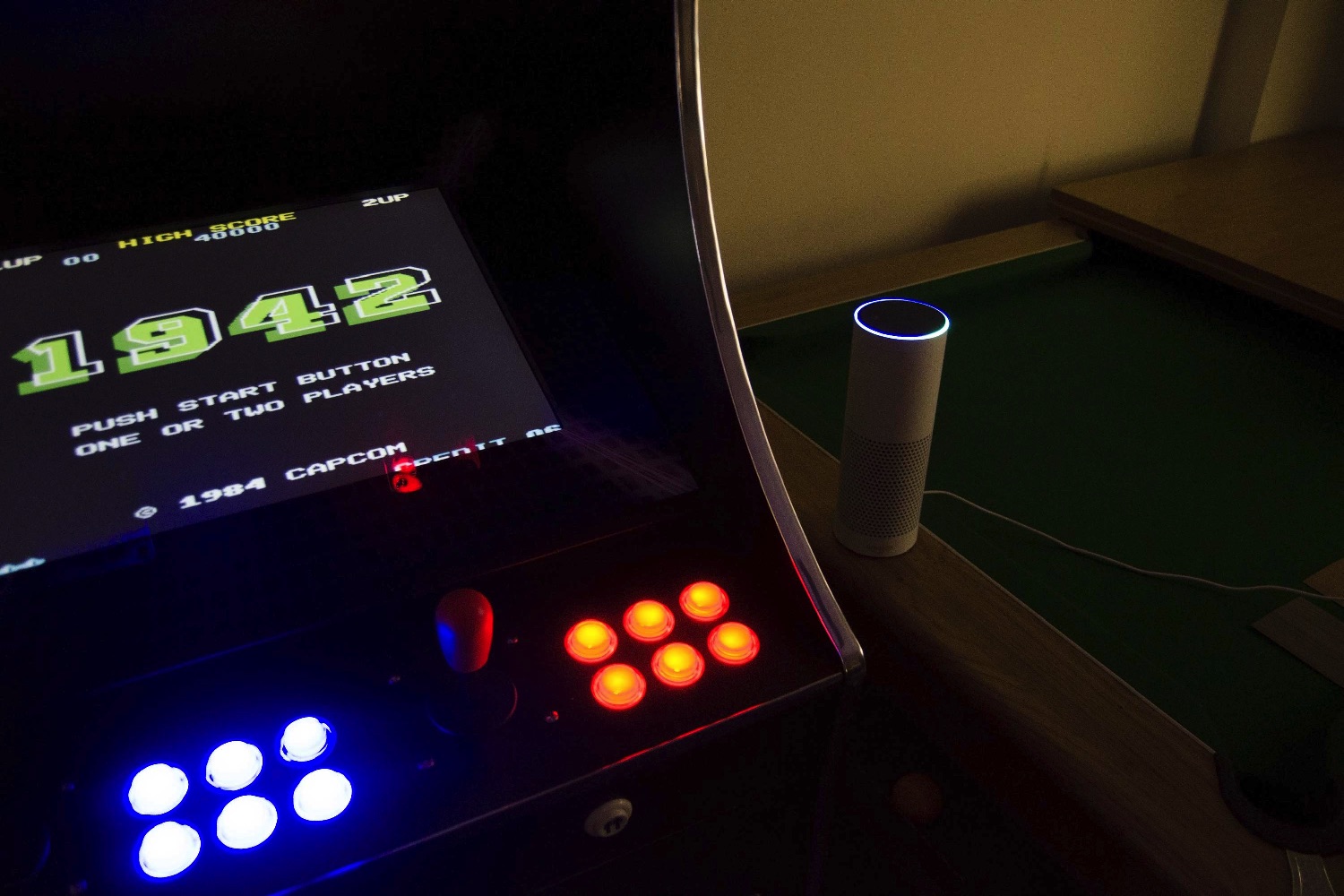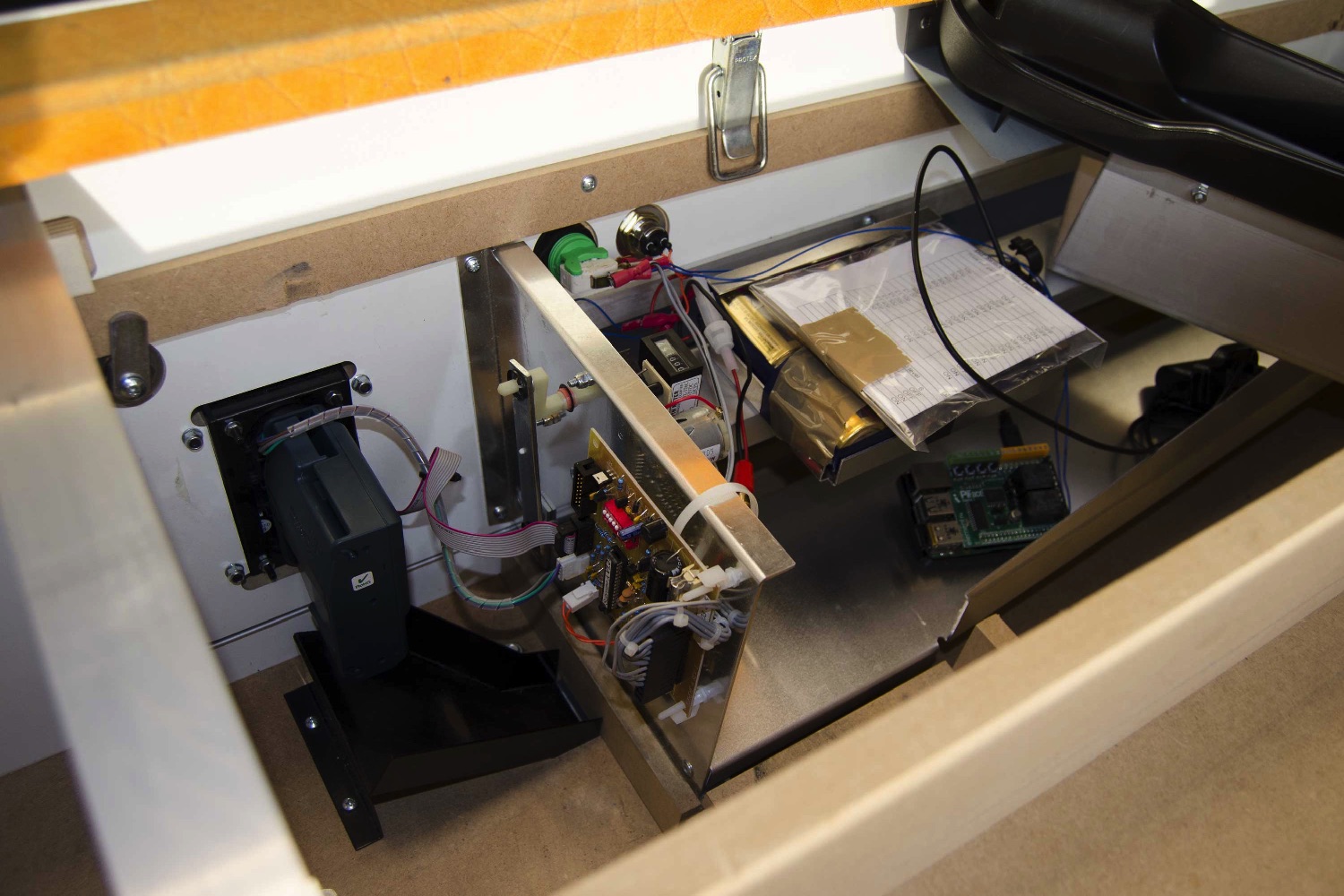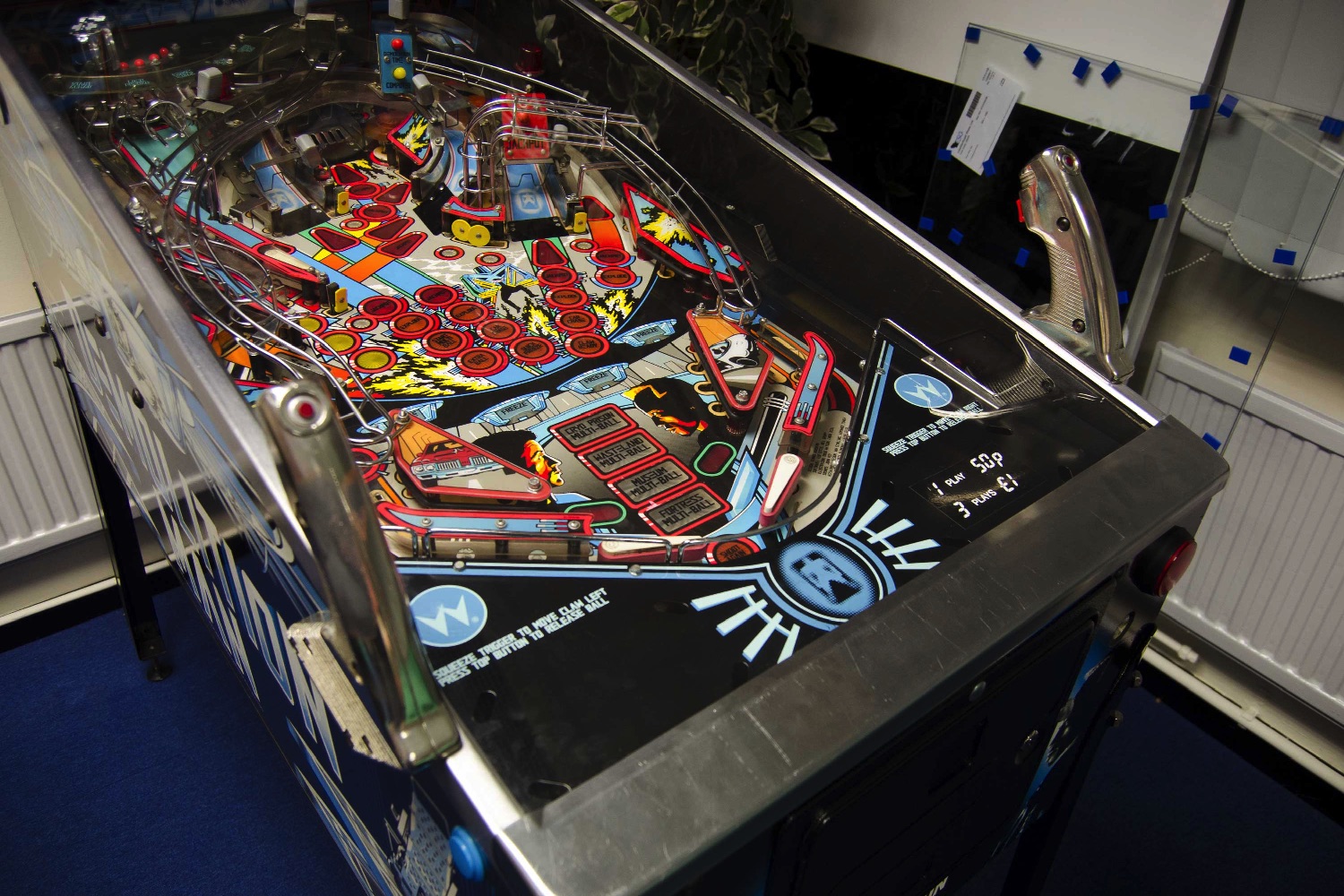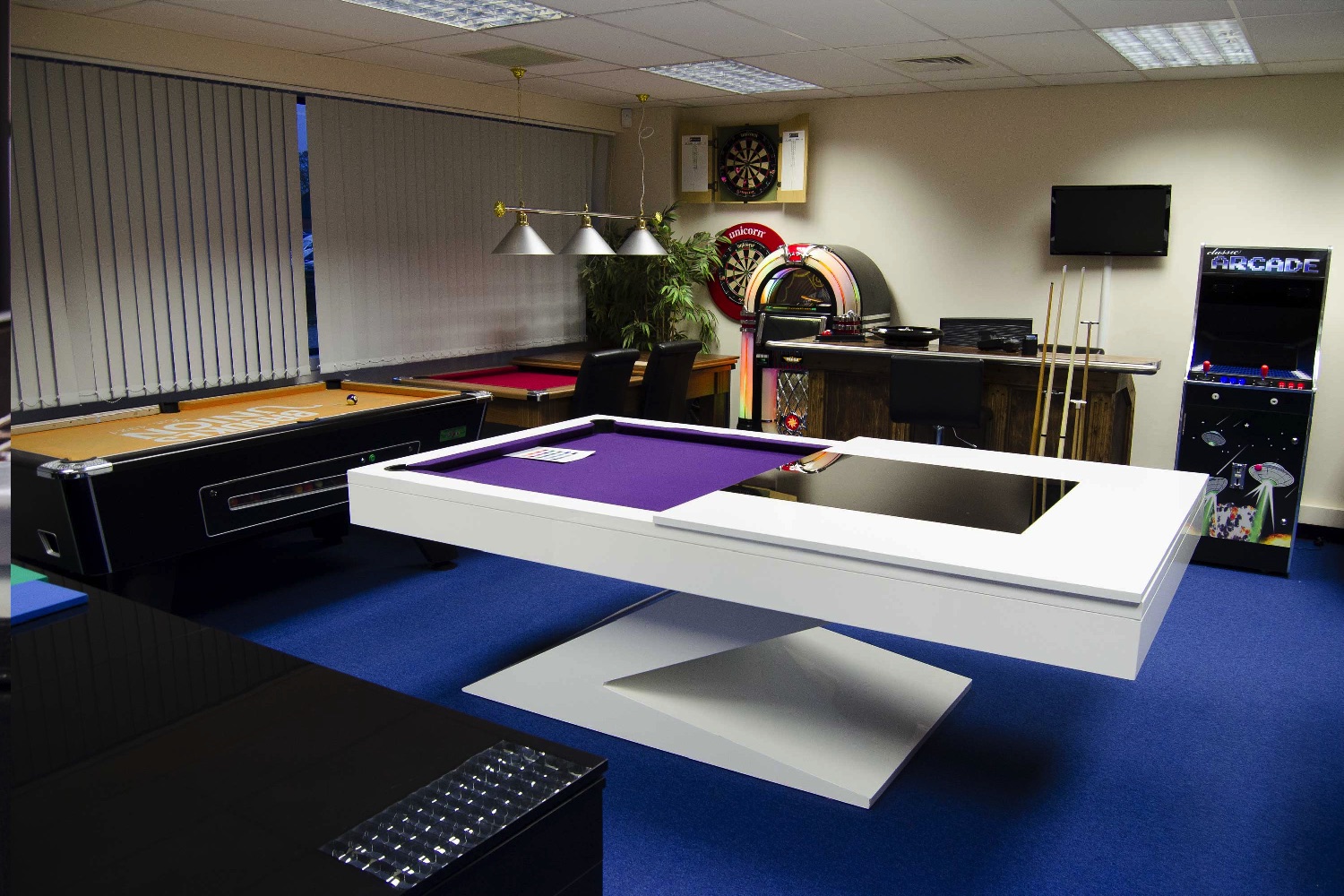That’s where U.K.-based game room specialists Liberty Games come in. And they’ve just come up with a way to make our dream basement even dreamier by adding an Amazon Echo, Raspberry Pi and Logitech Harmony Hub to it. The result? A smart game room you can bring to life with just your voice.
“We picked some of our most popular products for the demo,” Stuart Kerr, head of digital at Liberty Games, told Digital Trends. “We modified a pool table by adding a Raspberry Pi into the mix so that you can release the balls with a voice command. We also set up the arcade machine so you can fire up a credit and pinball machine that can fire off a ball. Finally, we rigged up the jukebox — because it looks so cool when it pulls out a CD on command.”
The demo was created as part of a fun ‘hack’ by members of the team, but Kerr said it’s a service they would certainly be willing to offer any customers looking to add a bit of extra flair to their geek cave. He noted that it is also something that is far more manageable with 2016-era tech than it would have been even a few years back.
“If you go back a couple of years before the Echo came out, this could easily have added an extra $10,000 on top of the cost of the games room to set up a bespoke system for doing this,” he said. “With the technology as it is today, an Echo costs [$180] and a Raspberry Pi cost is just [$35]. It’s made it much more affordable.”
The team’s not stopping here, either. “There are some dart boards with pressure sensors built into them,” Kerr continued. “We think it would be possible to have one recognize your score when you throw a dart and then to have that fed back through the Echo.”
Well, we’re sold! Just tell us who we make the check out to.
Editors' Recommendations
- Amazon Fire TVs are getting their own cloud gaming hub featuring Luna
- Make room for the Amazon Echo Show 15, pre-orders go live
- Amazon’s Echo devices gain group-calling and call captioning features
- A battery-powered Amazon Echo? I wish all smart speakers had this feature
- Amazon’s Echo Buds might be getting a fitness-tracking feature
